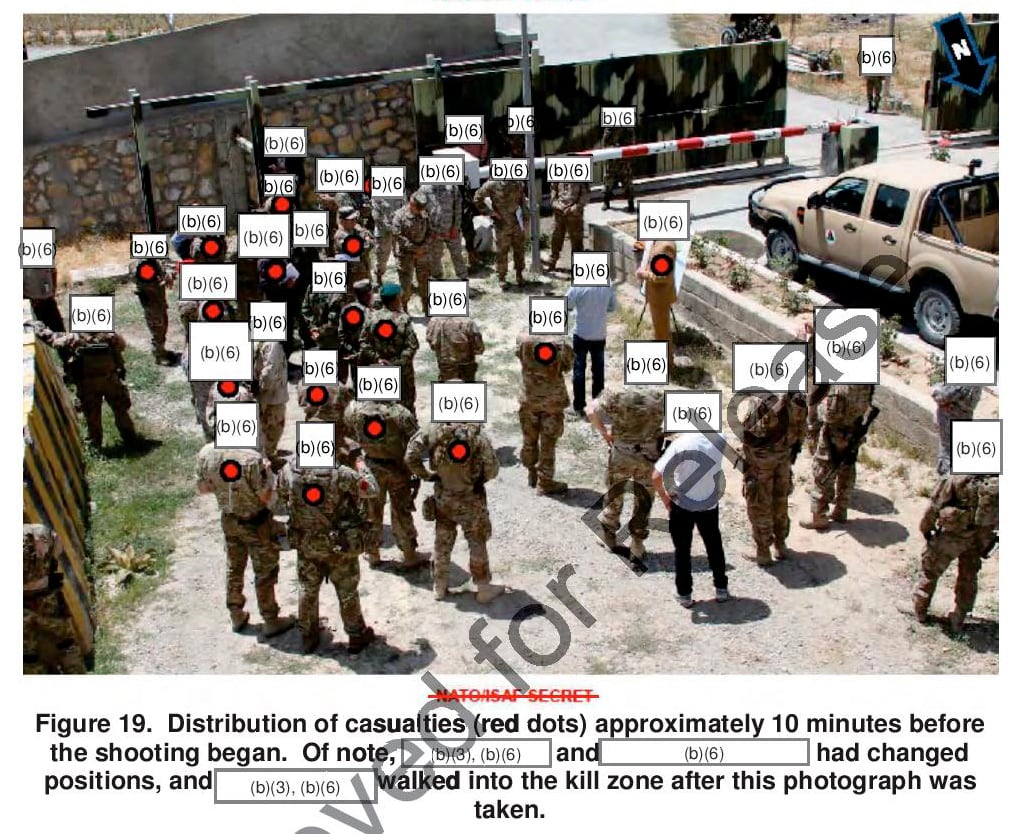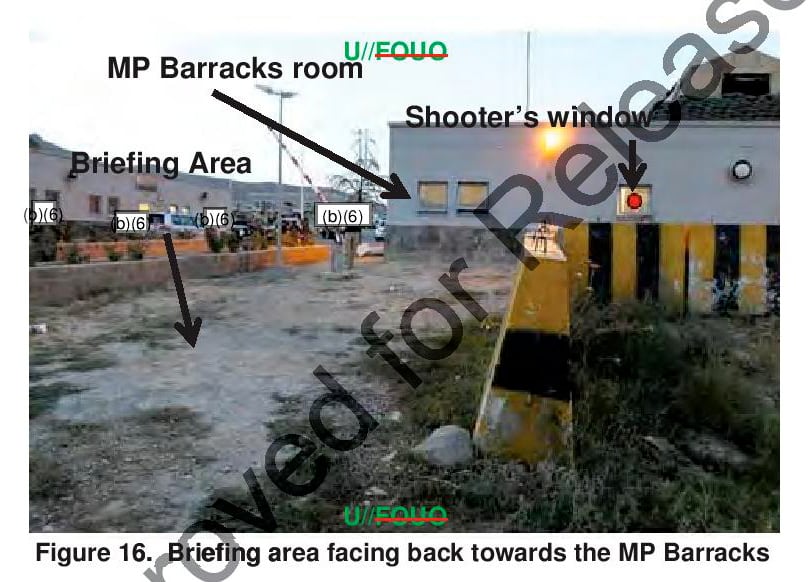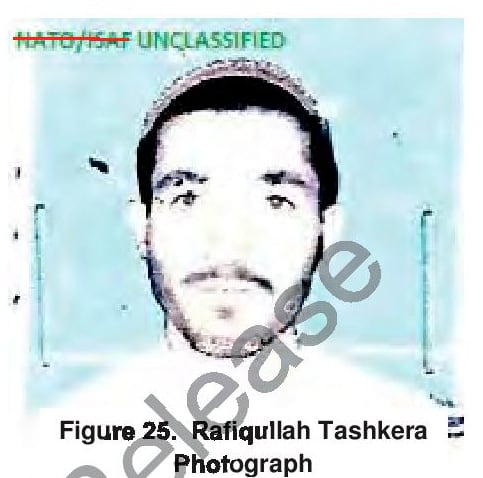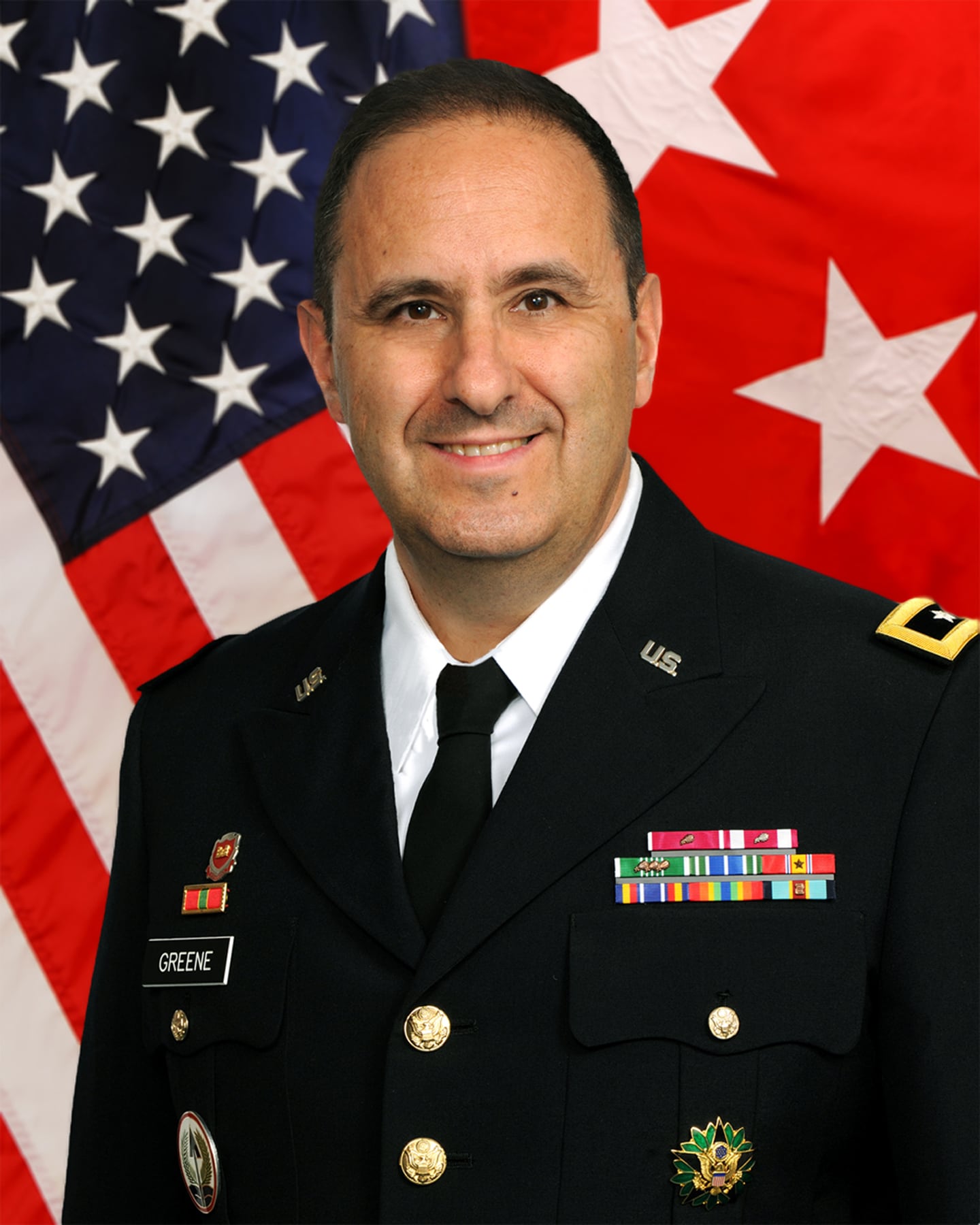Maj. Gen. Harold Greene, the first American general officer to be killed by combat fire since Sept. 11, was shot by an Afghan MP who fired approximately 30 rounds from a barracks bathroom window into a large group of coalition forces.
The Aug. 5 insider attack during a visit to the Marshal Fahim National Defense University in Kabul, Afghanistan, wounded 18 other coalition and Afghan forces, but it "could not have been reasonably foreseen or prevented," according to the investigative report into the incident.
The report, released Thursday morning, is available here.
"This incident does, however, bring into question a fundamental problem set in how we must balance the need for maintaining an environment of trust and confidence with our Afghan partners while providing adequate force protection for our advisory team members and leaders into Resolute Support," the report, prepared by Brig. Gen. Donald Jackson, states.
After a spike in insider attacks in 2012, the number of incidents seemed to have declined, but high-profile attacks such as this one and the April 2011 attack by an Afghan colonel that killed eight airmen and a contractor at Kabul International Airport, have raised questions about the strength of the partnership between coalition and Afghan troops.
The U.S. and NATO will transition from Operation Enduring Freedom to Resolute Support at the end of this year, as Afghan forces take full responsibility for security in the country.
About 9,800 U.S. troops will remain in Afghanistan next year to continue to train and advise Afghan forces, and security and force protection remain priorities especially as the American footprint gets smaller.

Red dots in this image from the investigative report show the distribution of casualties from the Aug. 5 insider attack. U.S. and coalition forces had gathered for a briefing.
Photo Credit: ISAF
At the time of the shooting, Greene was the deputy commanding general of Combined Security Transition Command-Afghanistan.
The organization, along with NATO Training Mission-Afghanistan, was primarily responsible for training and advising the Afghan National Security Forces.
Among the wounded were 10 Americans, a German brigadier general and an Afghan brigadier general.
Greene and about 90 other U.S. and coalition forces were visiting the university for a status update on its construction projects and a preview of its officer producing capabilities. The university is home to the National Military Academy of Afghanistan and the Afghan National Army Officer Academy.
"The threat level that day was assessed as low, with no indicators of unusual activity or concern," the report states.
During the visit, the group, which included eight coalition and Afghan general officers, visited multiple construction sites across the university campus. At about 11:40 a.m. local time, the group made an unplanned stop near the MP barracks for a briefing.
About 15 minutes later, the Afghan National Army MP, identified as Rafiqullah, started shooting.

This image from the investigative report shows the shooter's window and the briefing area that was fired upon.
Photo Credit: ISAF
"Rafiqullah positioned himself in the bathroom, in direct view of the gathering, stuck the barrel of his M16 rifle out of the bathroom window, and fired approximately 27-30 rounds into the crowd," the report summary states. "He hit 18 people, killing MG Greene and seriously wounded several others before two Coalition Forces soldiers returned fire and killed him."
The shooting was over in less than a minute, according to the report.
"Before the shooter could finish a 30-round magazine, [coalition personal security detachment] members quickly returned fire that neutralized the shooter," the report states.
At least two coalition soldiers – one Danish and one American – fired at Rafiqullah.
"These soldiers saved numerous lives, as most of the gathering was either hit, and on the ground, or scrambling to get behind cover," according to the report. "Most had no idea where the firing had come from, assuming it had come from outside the perimeter."

The shooter was named Rafiqullah, an Afghan MP.
Photo Credit: ISAF
When the shooting stopped, coalition troops quickly assembled a team to enter the barracks. Inside, they found several Afghan soldiers standing outside the bathroom "in apparent shock," according to the report. One of them was holding the shooter's M16 rifle by the barrel.
Coalition troops entered the bathroom and found Rafiqullah hunched over "in the corner shower of the bathroom in a pool of blood, barely breathing with his body armor off and no sign of his weapon," the report states. The soldiers checked him for explosives and were about to administer first aid when the shooter died, according to the report.
Investigators later found 12 bullet holes in the bathroom window.
Greene was shot in the pelvis, head and neck, according to the report.
Members of the security teams worked frantically to save him.
One soldier, in a sworn statement also released Thursday, described performing chest compressions on Greene.
"After a while I … knew there was nothing more we could do, he was gone," said the soldier, whose name was redacted.
The soldiers rushed Greene to the back of a pickup truck to move him to the helicopter landing zone.
"I kept talking to the general to let him know he was going to be OK, and we were getting him to safety," another soldier, whose name was redacted, said in a sworn statement. "I did not know if he could hear me, but I wanted him to know in case he could."
Of the wounded, all but two had either been released from the hospital or were expected to fully recover when the report was written Aug. 31. The remaining two soldiers were being treated at Walter Reed National Military Medical Center.
The investigation found no links between the shooter and the Taliban or any other extremist groups, although the International Security Assistance Force continues to investigate.
"It may be that the shooter was self-radicalized, or that he suffered from some sort of psychological condition (which the ANA claims is the cause.)," the report states.
The investigation also found the shooting likely was not premeditated, and the shooter, a single 22-year-old Pashtun from Paktiya province, simply "took advantage of a target of opportunity provided by the close gathering," according to the report.
The shooter joined the Afghan army in 2012. As a military police soldier, his duties included manning guard towers. The investigation found he had not taken leave during the previous seven or eight months before the shooting, and his chain of command had denied his leave request during Eid, the Muslim holiday marking the end of Ramadan.
The Afghan army indicated the shooter exhibited no signs of anti-American or anti-ISAF sentiments, but the U.S. investigation "indicated he may have had some bias against coalition forces," with "disdain for Americans in particular," according to the report.
Investigators found "no negligence on the part of event planners or leaders present."
"This incident could not have been reasonably foreseen or prevented, appearing as an isolated act of a determined shooter without indicators or warnings," the report states.
The investigation also praised the quick response of coalition forces in "neutralizing the shooter, rendering first aid and evacuating casualties," with the investigating officer recommending the Bronze Star Medal with V device for the two soldiers who killed the shooter. Other recommended awards include the Bronze Star, the Army Commendation Medal with V device, and the Defense Meritorious Service Medal.
The report also included these recommendations:
• Review the ISAF standard uniform and the use of personal protective equipment.
Leaders should consider the purchase of "concealable body armor to be worn by senior leadership, and possibly by all personnel who work individually or in small groups on a daily basis in Afghan facilities and outside standard ISAF facilities."
At a minimum, personnel should always wear their personal identification tags and carry the appropriate medical gear, such as a tourniquet and bandages.
"This is a discipline that must be enforced by unit leaders at all levels – typically the more senior members are the ones most often in violation."
• Require an appropriately approved commander's risk assessment for any scheduled event.
The assessment must be approved at the appropriate level given the grade and number of participants. For example, in this case, given the number of general officers present, approval should have been required at the three- or four-star level.
Also, control measures "must be put into place to limit the number of participants for any event to that which can be reasonably managed and secured."
• Require an appropriately approved security plan for any scheduled event.
The security plan should be implemented using information from the commander's risk assessment. Events that include multiple security teams must be fully coordinated and synchronized. The plan also must be rehearsed with all individual security teams participating in the event.
• Review the operational readiness of personal security detachments and close protection teams, and institute a standardized training and certification program across ISAF.
All of these teams must be trained and certified before conducting security operations in Afghanistan. This must include theater-specific training and orientation; advanced driver, medical, communication and weapons training; and rules of engagement and conflict de-escalation training. The training must be a mandatory NATO requirement during pre-deployment training followed by quarterly in-theater validations.
Before deploying to Afghanistan, Greene was deputy for acquisition and systems management in the office of the assistant secretary of the Army for acquisition, logistics and technology at the Pentagon.
Greene, 55, was born in Boston and commissioned at Rensselaer Polytechnic Institute as an engineer officer in 1980. He held a doctorate in materials science, master's degrees in engineering and a master's in strategic studies.
He served at all levels of the Army, serving in places such as Fort Polk, Louisiana; Germany; Fort Leonard Wood, Missouri; Natick, Massachusetts; and at the Pentagon, spending much of his career in acquisitions.
During a memorial service at the Pentagon shortly after his death, Greene was remembered as a leader, scholar and family man who cared deeply about his soldiers.
The standing room-only crowd gathered in the Pentagon auditorium for the memorial, which was marked with tears but also laughter as Greene was remembered for his sharp wit, his love of the Boston Red Sox and his outsized personality.
Greene was laid to rest at Arlington National Cemetery.
He is survived by his wife, retired Col. Susan Myers, his daughter Amelia, his son 1st Lt. Matthew Greene, his daughter-in-law Kasandra, and his father Harold Greene.
Michelle Tan is the editor of Army Times and Air Force Times. She has covered the military for Military Times since 2005, and has embedded with U.S. troops in Iraq, Afghanistan, Kuwait, Haiti, Gabon and the Horn of Africa.




